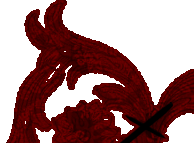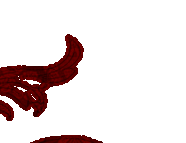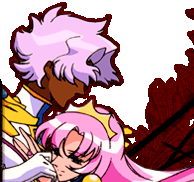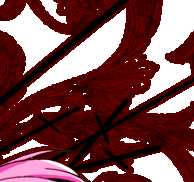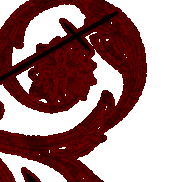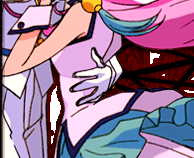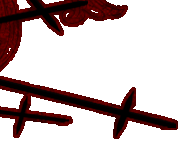
This analysis
was donated by Jane. 
Essay Prompt: Find another literary adaptation of ‘Sleeping Beauty’ and compare it to both The Brothers Grimm, ‘Brier Rose’ and Banana Yoshimoto, ‘Asleep’.
‘Asleep’ by Banana Yoshimoto and the television series ‘Revolutionary Girl Utena’ are works that allude to and draw heavily from ‘Sleeping Beauty’, especially the Brothers Grimm retelling, ‘Brier Rose’. Both contain imagery and motifs found in the story, such as women trapped in sleep, flowers, and a curse. They also make use of storytelling techniques that, according to writers such as Marina Warner and Bruno Bettelheim, are common to fairy tales. These include dream-logic, a sense of detachment from reality, and veiled references to the transition from childhood to adulthood, and the sexual awakening that comes with this.
According to Bettelheim, ‘Sleeping Beauty’ is about a “child’s sexual awakening” and how “despite all attempts on the part of parents to prevent” this turning-point in her life, “it will take place nonetheless. Furthermore, parents’ ill-advised efforts may postpone the reaching of maturity at a proper time” (Bettelheim 230-1). Seen from this perspective, ‘Asleep’ is a far looser interpretation of the fairy tale than ‘Brier Rose’ or ‘Revolutionary Girl Utena’. Yoshimoto’s protagonist is a young woman, not an adolescent girl. She has already gone through her sexual awakening, and the story’s sexual elements do not have the same presence as they do in the other two works. ‘Brier Rose’ and ‘Revolutionary Girl Utena’ depict sexuality as a mystifying and powerful force that takes control of their characters’ lives. The only similarity the texts shares in their depiction of sexuality is how it is alluded to, but never dealt with outright. Terako’s love for her dead friend Shiori is possibly more than platonic. When Terako lies to her boyfriend that ““[Shiori] married…and left me”” it is almost as if she is talking about a former lover, not a room-mate (Yoshimoto 149). Terako’s sexual feelings, are ambiguous, but never in the foreground, and they do not possess the sense of otherness found in the other two texts. Most of the characters in ‘Revolutionary Girl Utena’ are in their teens, meaning that sexuality something they are in the midst of understanding. They attend Ohtori Academy, a limbo “of adolescent emotion” where they will remain children until they choose to leave (Napier 172).
In Hollywood Cartoons: American Animation in its Golden Age, Michael Barrier points out that, for female fairy tale characters, youth is something to be desired. However, it is only temporary. A beautiful girl will eventually become an old woman, and there is nothing that can be done to prevent it. For this reason, adolescence is both exciting and terrifying. On one hand, the princess in ‘Brier Rose’ is developing into a young woman. On the other, she is closer to old age. If the bad fairy’s curse had come true, then the princess would never get to experience being old. Instead, she would have always been remembered as young and beautiful. The twelfth fairy’s modified version of the curse is the lesser of two evils in more ways than one. It allows the princess a longer life, but because of this it also means she will ultimately grow old. Bettelheim interprets her parents’ attempts to keep the curse from being fulfilled as a way to prevent her inevitable sexual awakening, but it is also their way of keeping her from harm of any sort. If she never pricks her finger – which will set the curse in motion – then she can stay an innocent child, unaware of her fate. But ultimately, ‘Brier Rose’ “deals with the futility of trying to escape one’s fate” and so the curse is fulfilled. (Zipes 476).
Something similar happens in ‘Asleep’. Terako cannot accept Shiori’s death. To keep on living means having to do that, so instead she avoids it. She isolates herself in her apartment, sleeping almost constantly. Terako is past both childhood and adolescence, but by sleeping, she tries to postpone living an adult life. Her situation is similar to that of Anthy. While both are capable of being “awake” in a way that Brier Rose is not (i.e. they are aware of their circumstances), they choose not to. Anthy is in a literal limbo, while Terako is in a metaphorical one. Both have the power to alter their fate, an opportunity Brier Rose is never given. Her parents keep all knowledge of the curse from her. She is naïve and innocent, unknowingly drawn to her destiny. Once that has been fulfilled, she can only lie, unconscious, until a prince breaks her curse. In contrast, Anthy and Terako only choose to believe they are powerless. It is clear that there is no prince to save them, but engaging with the people they love can still be the key to help them escape. Utena ultimately fails to be Anthy’s prince because her “constant protectiveness can…be overwhelming” but her determination to reach out and help is what inspires Anthy to leave the academy behind (Napier 176). Similarly, Terako has a boyfriend, but while he can help her in some ways, he cannot save her. He can provide her with a link to the outside world and make her feel less alone, but he also enables her isolation. He supports her financially, and the guilt Terako feels from dating a man whose wife is comatose make her want to retreat deeper into sleep. Realtionships with others are important, but even more so is self-reliance.
The sense of stasis in ‘Revolutionary Girl Utena’ gives it another of its fairy tale elements – its use of dream-logic. Utena claims to have met a prince when she was younger, despite living in a world where people use modern technology such as cars and computers. Her childhood memory goes unquestioned; she blindly accepts that the prince was real, despite the anachronisms. This is not the only example of fairy tale logic in the series. In episode 16, a vain girl turns into a cow after wearing a cowbell as a fashion accessory; in a later episode, the same girl lays an egg. No explanation is given for this or any of the other strange events that happen in the series. This fits with Warner’s description of how fairy stories are told. She explains that they are often “terse to the point of blankness, brimful of inconsistencies, and plotted with a baffling lack of logic” (Warner 45). But, in other ways, it subverts those tropes. Like ‘Brier Rose’, the series contains many fantastical, dreamlike moments. Unlike ‘Brier Rose’, the characters are more complex. They are not the kind of archetypes – e.g., the princess, prince and bad fairy – that are found in fairy tales. One of the main sources of conflict is that many characters in ‘Utena’ see these archetypes as ideals to live up to. At first glance Anthy appears to fit the princess archetype. She “embodies some of the more disturbing traits of feminine passivity” – she is demure, caring, and “appears to have no willpower of her own” (Napier 173). As well as this, she is engaged to Utena, who wants to be a prince. However, “the Anthy loved by adolescent Utena does not really exist” (Napier 174). Anthy is in an abusive relationship with Akio, her brother. She only acts passive to manipulate others, in the hopes of escaping her situation. In episode 34, she is referred to as a witch, a common fairy tale antagonist and the polar opposite of a princess. She is complex enough to embody aspects of both, unlike a more two-dimensional fairy tale character. Akio used to be a prince, but the pressure of his role corrupted him. Utena’s attempts to be a prince also fail, as it is impossible to live up to such an ideal.
‘Brier Rose’ is another story of characters in suspended animation, where “the princess will return to an unchanged world” (Zipes 476). When the princess pricks her finger she and all inhabitants of the kingdom fall asleep. It is not just sleep but almost total inertia, and “[t]his…interruption in time has the strange advantage of the sleeper’s being able to take her whole world with her into the lapse” (Zipes 476). This is played with in different ways in ‘Revolutionary Girl Utena’ and ‘Asleep’. In the former, none of the characters are literally asleep, but they cannot move on from Ohtori Academy until they leave their childish ways behind. Images of eggs are used in frequently, as well as “various images of Anthy and Utena in coffins”, to show how the characters are stuck in their habits and unable to grow up because of it (Napier 174). In the final episode, Utena is unable to rescue Anthy from the coffin she is lying in. She cannot lie passively and expect to be saved. Ultimately, “Anthy has been galvanized by Utena’s actions and is now trying to take charge of her own life by leaving the academy” (Napier 175). It is a difficult thing to do, but once she has taken her fate into her own hands, her brother is powerless to stop her.
‘Asleep’ is the least like a fairy tale in that it is mostly focused on Terako’s internal world. Her character and its complexities are explored in depth. It is told in the third person, with details about the story revealed slowly throughout. ‘Brier Rose’ is only a few pages long, told in the first person. The narrative is linear and only the simplest emotions are described; the fairy is angry for being left out of the celebrations and the princess’ parents are scared for their daughter’s safety. These feeling are never elaborated on, and this, combined with its condensed style, gives it the oneiric style that Warner claims is typical of fairy tales. While it makes sense as a whole, when examined more closely, there are small details in the story that do not make sense, but are still accepted by the reader since that is the way fairy tales work. The queen is told she will have a child by a talking frog that appears in her bath, a bizarre scene that is never explained. Later, the thirteenth fairy is not invited to the celebration of the princess’ birth because there are not enough plates, and upon discovering this she becomes disproportionately angry. Both of these things could happen in a fairy tale, but never in real life. The characters’ unnatural behaviour matches the unnatural events. In comparison, ‘Asleep’ also has fantastical, dream-like moments, but is set in a more recognisably real world. Terako’s decision to sleep near-constantly may be strange, but in her situation it makes sense. This makes the moments when her dreams blur with reality, such as when the spirit of her boyfriend’s wife appears to her, all the more jarring.
Floral imagery is present in all three texts. The protagonist of ‘Brier Rose’ is named after a type of flower. After her and the rest of the kingdom fall asleep, the same flowers grow around it, preventing anyone from entering. Over the years, princes try to save her, but they cannot get through the overgrowth. While it is never fully explained, there does seem to be a symbolic connection between the princess and her namesake. There is also some ambiguity as to whether the role these flowers serve is malevolent or not. While they are part of a fairy’s curse, that curse was diluted by one of her sisters. The flowers could be acting as guardians of the princess and her people. They may keep princes from entering, but it is possible these princes did not possess the right qualities to pass through. After one hundred years – the amount of time Brier Rose had to stay asleep – another prince comes, and this one is allowed through the barrier. While he could simply have been in the right place at the right time, it is also possible that the roses judged him as more worthy than his predecessors.
In Revolutionary Girl Utena, Anthy is known as the Rose Bride. She and the princess in ‘Brier Rose’ are named after the same kind of flower. In a repeated sequence shown before every swordfight from episodes 25 to 32, Anthy’s body disappears, leaving her clothes behind. Roses then grow from her discarded clothing, though the reason why is left unclear and it is never commented on – another example of fairy tale logic. In the final episode, Utena has to make her way through a gate overgrown with roses, in an attempt to rescue Anthy, who is lying in a coffin. Considering Utena’s devotion to becoming a prince, it is highly likely that this scene is a reference to the ‘Sleeping Beauty’ story.
‘Asleep’ makes use of flowers in a more subtle way, and they play a smaller, but still significant role here than in the other two texts. Terako meets Shiori in a dream, and together they arrange flowers in a vase. The flowers here are tulips, not roses, and dead rather than alive, but they do spin around of their own accord, suggesting something supernatural about them. The dream is described vividly, as if the encounter actually happened, and gives Terako a sense of closure. In all three texts, flowers are shown as supernatural and enigmatic, but while ‘Brier Rose’ and ‘Revolutionary Girl Utena’ has overgrown roses keeping a princess from being awakened, ‘Asleep’ has flowers, moving gently but contained in a vase, that help the protagonist break away from her bad habit and face reality again.
All three interpretations of ‘Sleeping Beauty’ depict a retreat from reality, where female characters are isolated from the rest of the world. The texts interpret this idea in different ways – in ‘Brier Rose’ it is a curse, in ‘Asleep’ it is done by choice, and in ‘Revolutionary Girl Utena’ it is somewhere between the two – but they share key elements in common. In all three, the characters are unconscious, whether figuratively or literally, and shut out from reality in enclosed spaces where little can change. Escaping from this state is difficult, and on the surface it may seem unappealing to do so. However, by the conclusion of each text, it is shown that it is worth the effort to leave it behind and re-enter the wider world.
 Bibliography
Barrier, Michael. Hollywood Cartoons: American Animation in its Golden Age. New York: Oxford University Press, 2006, pp. 230.
Bettelheim, Bruno. The Uses of Enchantment. London: Penguin Books, 1991, pp 230-1.
Napier, Susan J. Anime from Akira to Howl’s Moving Castle. New York: Palgrave Macmillan, 2005, pp 172-6.
Warner, Marina. Once Upon a Time. Oxford: Oxford University Press, 2016, pp. 45.
Zipes, Jack. The Oxford Companion to Fairy Tales. Oxford: Oxford University Press, 2000, pp. 476.
 |

